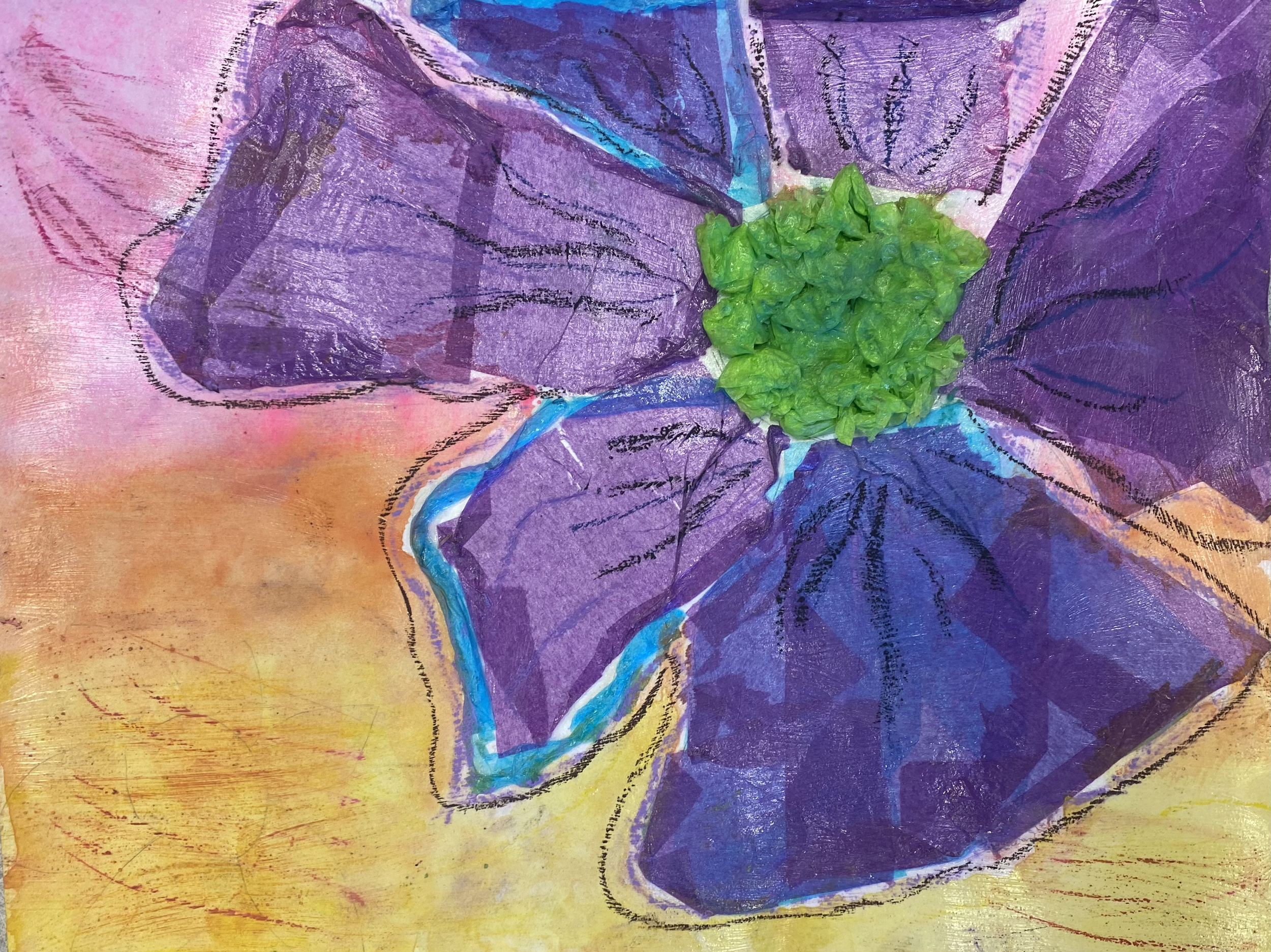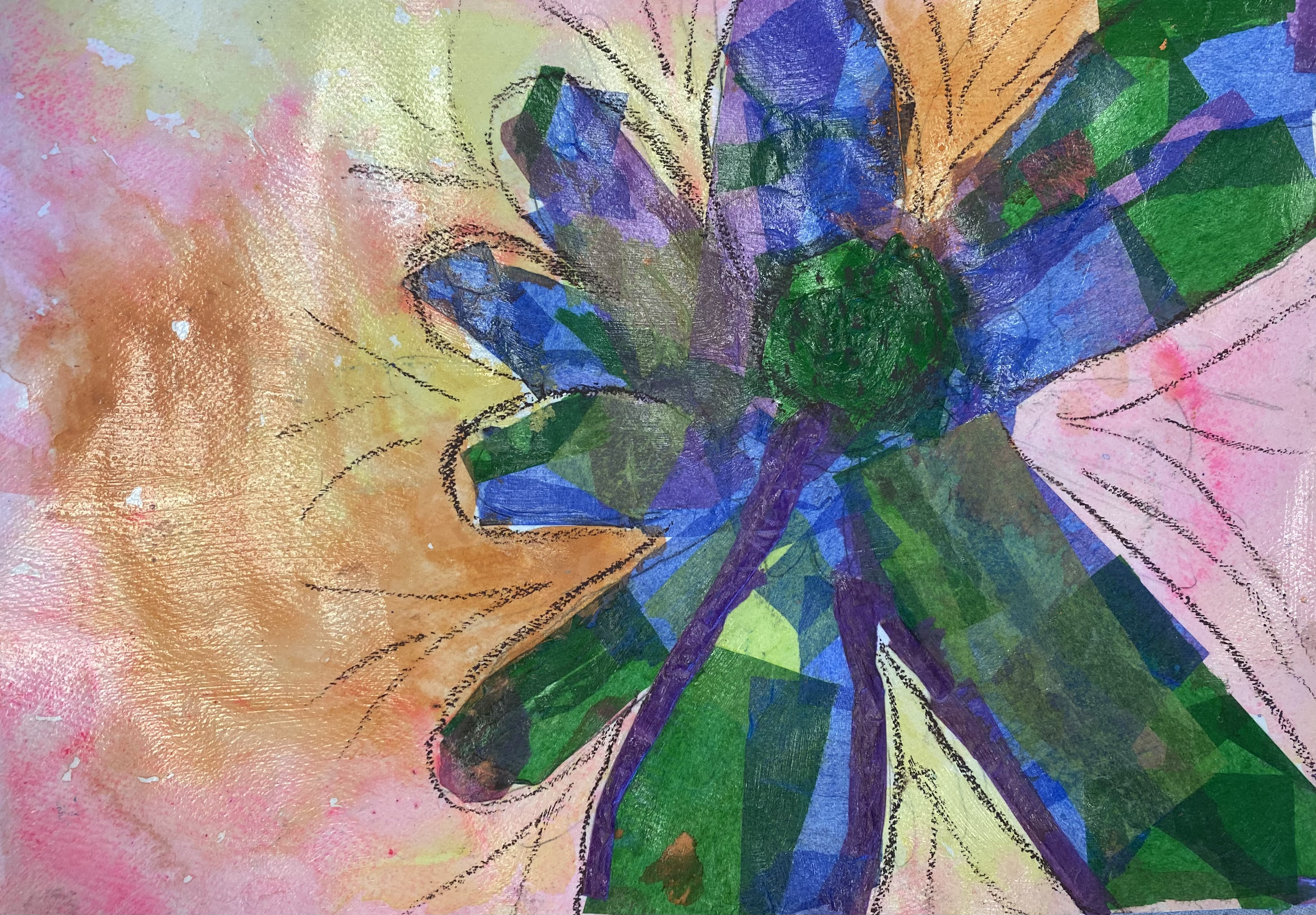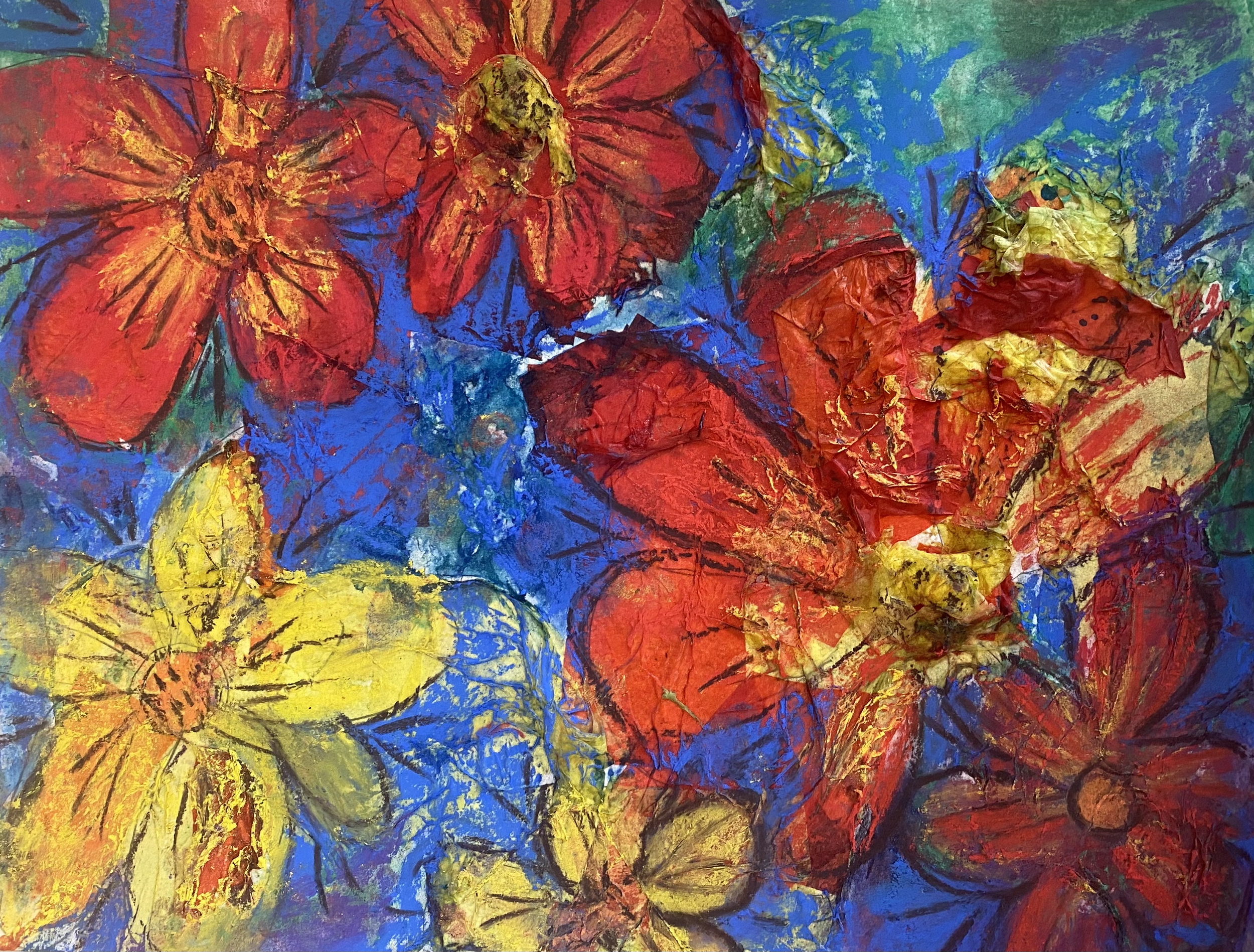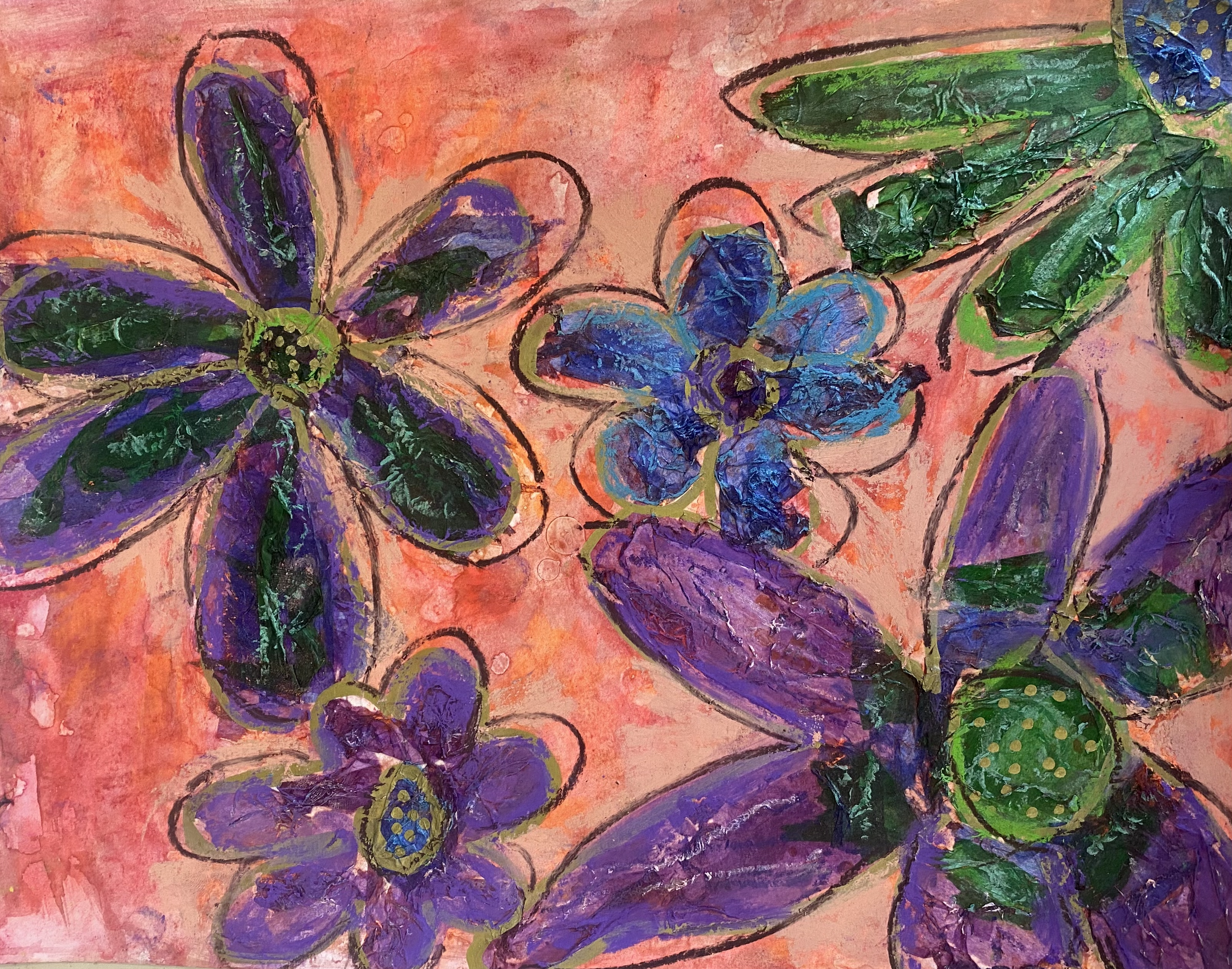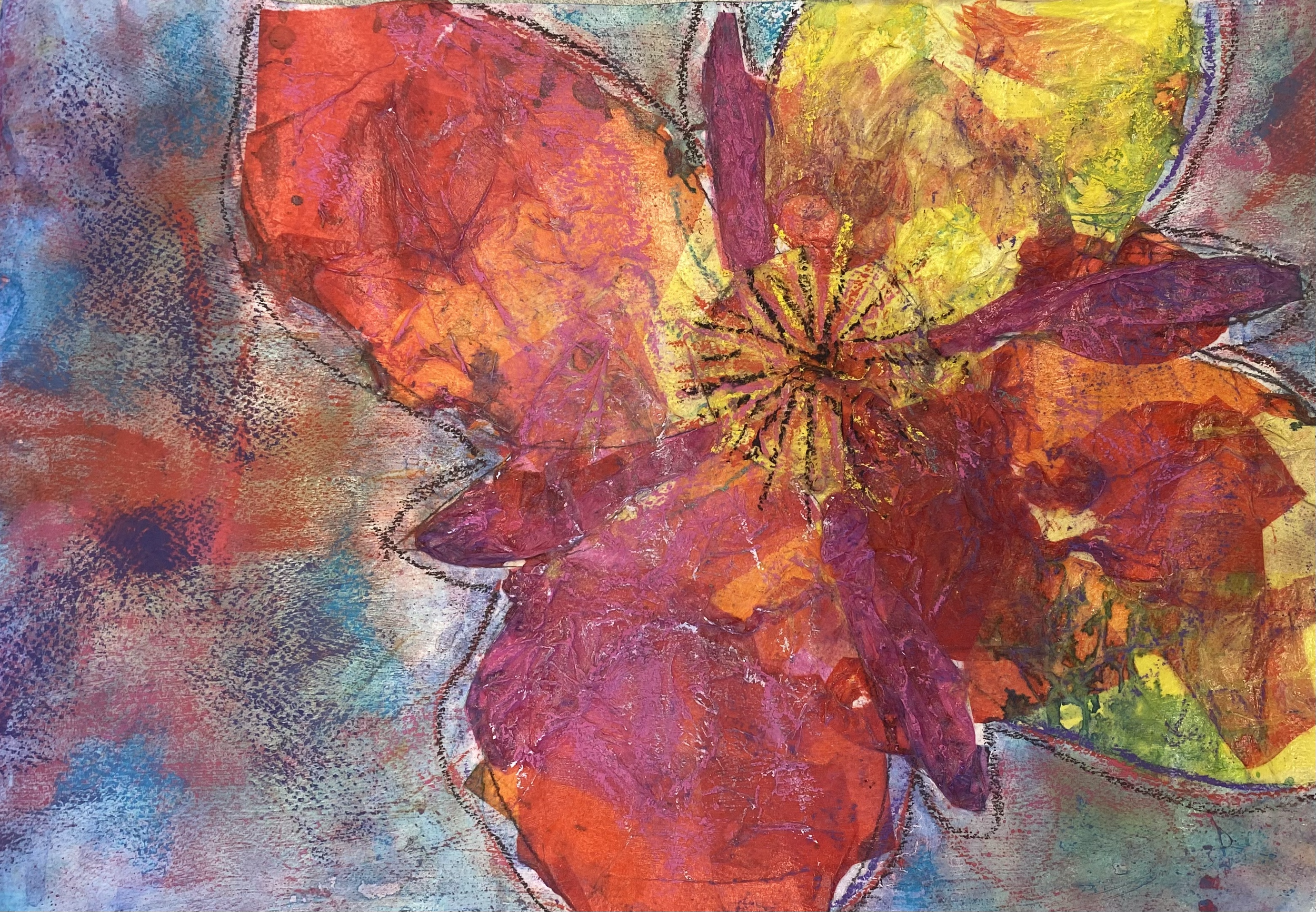Exploring Floral Abstraction in the Style of
Georgia O’Keeffe
Grade Level: Grade 3
Subject Area: Visual Arts
Duration: Half-day
Students dove into the vibrant world of art inspired by the iconic Georgia O’Keeffe. Students explored the technique of painting flowers in an abstract style, channeling O’Keeffe’s unique vision and creating their own captivating floral masterpieces.
From warm and cool tones to the intricacies of line and colour theory, this lesson was a journey of artistic expression and creativity. Our budding artists delved into the world of colour theory, mixed media, and collage, honing their skills and unleashing their imaginations.
Aligned with the Ontario Ministry of Education curriculum guidelines for Grade 3, this lesson empowered students to explore different colour schemes, materials, and techniques, fostering a deeper understanding of art and self-expression.
Curriculum Expectations:
Explore and experiment with a variety of materials, tools and techniques
Use warm and cool tones to convey mood and emotion in artwork
Create artwork inspired by the style of Georgia O’Keeffe, focusing on floral abstraction and close-up composition
Understand the use of line, tone and texture in artwork to define shapes, create form and express texture
Materials:
Paint (acrylic or watercolour)
Brushes
Canvas or watercolour paper (there is an extra fee for mounted canvas which is dependent on size).
Images of Georgia O’Keeffe’s flower paintings for inspiration
Palette
Water cups
Paper towels
Chalk pastels
Acrylic glaze
Tissue paper
Lesson Plan:
Introduction:
Begin the lesson by reading a book about Georgia O’Keeffe to the students, highlighting her style of painting, particularly her floral artworks.
Show images of Georgia O’Keeffe’s flower paintings and discuss her use of bold colours, composition and close-up perspectives.
Explore to students that they will be exploring floral abstraction and creating their own artwork inspired by Georgia O’Keeffe.
Demonstration:
Demonstrate how to paint a flower in an abstract style inspired by Georgia O’Keeffe.
Show students how use bold colours, simplified shapes and close-up compositions to capture the essence of a flower.
Review the concept of warm and cool tones, and ask students to choose either warm or cool tones for their flowers and the opposite for the background.
Discuss the concepts of perspective, foreground and background.
Introduce the concept of tonal ranges, explaining how overlapping tissue papers can create varying hues and tonal values.
Practice:
Provide students with watercolour paper and ask them to lightly sketch their chosen flower with a pencil.
Allow students to paint their flowers using the chose colour sand technique inspired by Georgie O’Keeffe.
Encourage students to experiment with different colours and techniques to create vibrant and expressive artwork.
Introduce tissue paper and thick acrylic glaze to add depth and texture to paintings.
Provide guidance and support as students work on their floral paintings, emphasizing the use of line to define shapes and create form with chalk pastels.
Reflection and Sharing:
Have students reflect on their artwork and share their paintings with the class.
Encourage students to discuss their creative process, challenges faced and what they learned from painting in the style of Georgia O’Keeffe.
Facilitate a class discussion on the use of line in their artwork, using chalk pastels to enhance the lines and textures.|
Conclusion:
Wrap up the lesson by highlighting key takeaways from exploring floral abstraction in the style of Georgia O’Keeffe.
Encourage students to continue experimenting with different art styles and techniques in their own artwork.
Assessment:
Observe students’ active participation and engagement during class discussions and activities.
Assess students’ ability to use warm and cool tones effectively in their artwork.
Evaluate students’ use of line to define shapes, create form and express texture in their paintings.
*Note: This lesson plan is designed to align with the Ontario Ministry of Education’s curriculum guidelines for Grade 3 Visual Arts, focusing on the exploration of materials, techniques, colour theory and student of an influential artist. However, it can be revised to apply to any grade level and curriculum expectations.
All art classes and workshops can be altered to meet any grade level or expectation.













